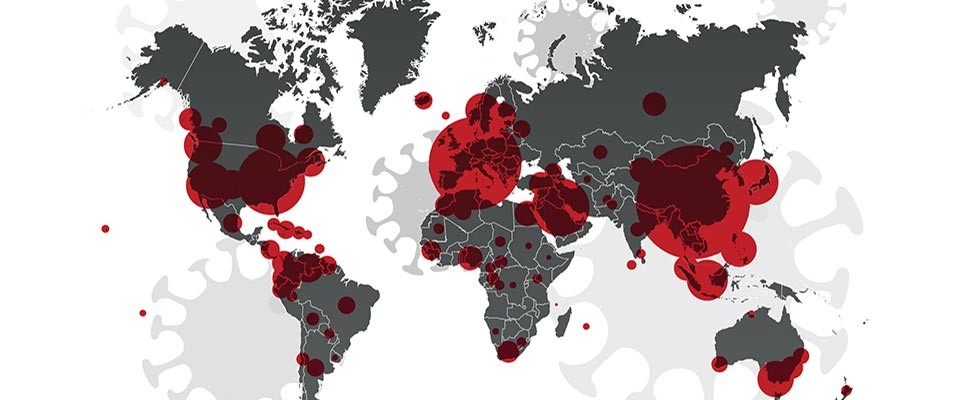
As the COVID-19 pandemic began to recede in the United States this year, Americans watched as other countries without available vaccines buckled under the strain of rising infection rates and deaths.
And when the world gasped for air, respiratory and oxygen providers stepped up.
The greatest surge in demand probably came from India, where COVID-19 cases spiked in the spring; by late May, about 27 million infections had been confirmed and more than 300,000 dead—with reports circulating widely that the true numbers were much higher. Compounding the spread in the crowded country where very few people are vaccinated was a desperate shortage of oxygen.
At the peak of the crisis, media outlets reported horrifying numbers: as many as 24 dead after the Chamaranjanagar district hospital allegedly ran out of oxygen; 12 COVID-19 patients dead after a delivery delay to Delhi’s Batra Hospital; an SOS warning from a children’s hospital that it might not have enough cylinders for babies in critical care. Stories abounded of families pleading on social media for empty liquid oxygen tanks they could fill up themselves and deliver to their hospitalized loved ones, or use to treat them at home.
The World Steps In
The U.S. government responded, deploying six planeloads of critical health supplies valued at about $100 million to the Indian Red Cross in New Delhi. USAID delivered nearly 1,500 refillable oxygen cylinders and nearly 550 portable oxygen concentrators (POCs), and a large-scale deployable oxygen concentration system that can treat 20 or more patients at once. It also included pulse oximeters, courses of the medication Remdesivir, rapid COVID-19 tests and N95 masks for frontline workers.
USAID said that it also provided the funds for local partners to buy an additional 1,000 concentrators; the manufacturer was not specified.
The nonprofit group Sewa International, a Hindu faith-based, humanitarian service organization focusing on disaster relief, also spent more than $3.5 million to order more than 7,482 oxygen concentrators from vendors in and outside of the United States to ship to India; these were distributed to government hospitals and to local and regional COVID-19 care centers.
As part of that package, Inogen donated 260 concentrators to Sewa, with free shipping donated by UPS. The nonprofit also sent oximeters and PAP machines.
“We got a phenomenal response from all Americans to our ‘Help India Defeat COVID-19’ campaign,” Sewa President Arun Kankani said in a news release. “Many corporations, hospitals and community organizations are calling us to offer help. Sewa volunteers are working hard to connect the dots.”
Producers, Too
Meanwhile, the India Times reported planeloads of oxygen concentrators and supplies being flown into New Delhi from companies and Indian émigrés around the world. In one article, it tallied 10,636 Philips-made oxygen concentrators, plus many more from across Europe and Asia.
The Philips Foundation announced in late June that it had teamed up with Prosus, Johnson & Johnson and its foundation to provide more than 800 ventilators to public hospitals in areas of India most impacted by COVID-19; more may have gone unreported. Philips India was to provide training, installation and support to get the equipment up and running.
“We learned from the Indian government and Red Cross that the number of COVID-19 patients requiring hospitalization and critical care had led to a shortage of respiratory support equipment,” Margot Cooijmans, director of the Philips Foundation, said in a release. “That is why the Philips Foundation and its partners have come together to help meet this urgent public health need in the most underserved areas of India.”
Around the same time, ResMed said it shipped more than 8,000 ventilators to more than 100 hospitals in India.
“We continue to work closely with our partners on the ground to gauge demand and our global teams are working together to build and send thousands more ventilators over the coming weeks,” ResMed Asia and Latin America President Justin Leong said in a May statement. In addition, the company said it had expanded the availability of its cloud-based monitoring solution in India and offered webinars to Indian doctors in order to help them use its cloud-based monitoring product.
CAIRE and its commercial products division, AirSep, said at the time that their requests for assistance from India—including oxygen concentrators and larger systems for the medical gas pipeline in hospitals—more than doubled as cases climbed. They also had U.S. residents desperate to send equipment to friends and family members in India. AirSep distributor Airox Technologies ordered hundreds of commercial-scale oxygen generators to serve thousands of hospital beds in India.
“For CAIRE the key objective of this close collaboration was to leverage our full portfolio of oxygen solutions and find the best ways to serve the people of India—to do the most good for the most people possible,” said President and CEO Earl Lawson.
More Work Ahead
But that’s not the end of the story, Lawson said. In India, at least, infrastructure changes must be made to guarantee oxygen access in the future, especially in the face of supply chain issues and logistics.
Indeed, the Indian National Medical Commission has now moved toward making captive oxygen plants mandatory for medical college hospitals in the country.
“As the world continues to battle COVID-19, CAIRE continues to be diligent in working with a variety of institutions to establish resources in preparation to meet future health crises—supporting patients with the most essential element of care—a reliable O2 gas supply,” Lawson said. “In particular, the situation in India remains critical and CAIRE continues to work with its partners to alleviate the current shortage and support installation of the appropriate infrastructure to ensure that such a situation does not occur again.”
